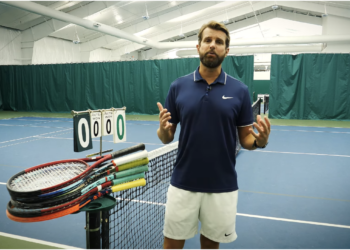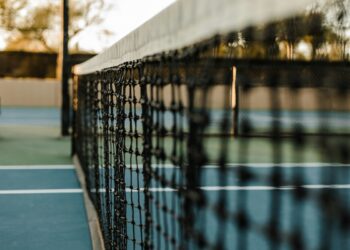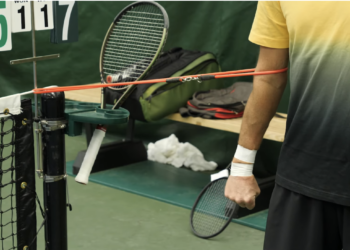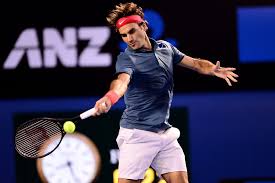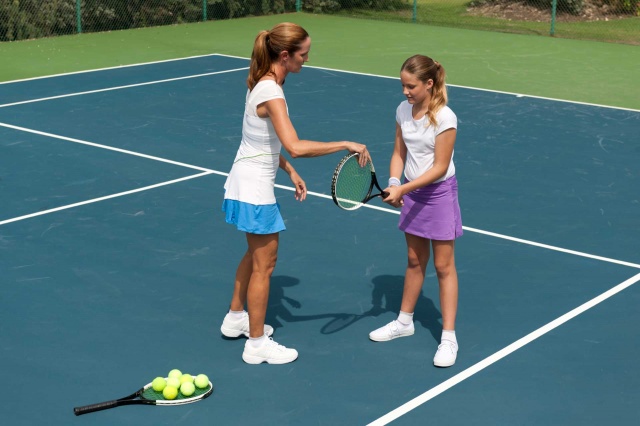 Tennis is an amazing sport that everyone should play. But there’s no doubt that it’s hard–no matter what anyone tells you. Tennis involves short-duration bursts of energy, which requires a great deal of strength, speed, power, and control. Not to mention the hand-eye coordination needed to make contact with the ball.
Tennis is an amazing sport that everyone should play. But there’s no doubt that it’s hard–no matter what anyone tells you. Tennis involves short-duration bursts of energy, which requires a great deal of strength, speed, power, and control. Not to mention the hand-eye coordination needed to make contact with the ball.
Watching the pros make it seem easy, but that’s why they are on TV getting paid the big bucks. In fact, tennis is considered to be one of the hardest sports to learn and play.
If you’re happy just playing tennis for some fresh air and exercise on the weekends, then you should continue. But if serious about improving your game, then taking tennis lessons are a must.
Ready to book a tennis lesson? Find a pro near you.
Why? Because you need to develop correct technique that will not only help you improve quicker and use your energy more efficiently, but you’ll be preventing yourself from developing serious injuries.
There’s really no one correct technique to hit a tennis shot since the body is capable of putting the arm, hand, and racquet in the correct position with the correct velocity to hit the ball. These body movements determine the coordination and loading that can contribute to injury.
This is where the kinetic chain in tennis comes into play.
The body acts as a system of chain links, meaning that energy or force generated by one link (or part of the body) is transferred to the next link. Optimal coordination (or timing) of these body segments allow efficient transfer of energy and power up through the body from one link to the next, each building upon the previous motion, all contributing to the racquet speed.
The most effective tennis strokes begin from the ground and go up through the hips and trunk, to the shoulder, and into the arm, hand, and racquet. Proper timing of all the segments in the kinetic chain maximize the transfer of energy to generate the greatest racquet speed AND prevent injury.
When these characteristics aren’t present, the transfer of energy in the kinetic chain is said to be “broken”. This is where injury will occur because too much pressure is being put on one part of your body, or segment of the kinetic chain. Another consequence is an overall lower level of performance.
Here’s a few examples of kinetic chain breakage in tennis players*:
• If the knees are not bent more than 10 degrees in the serve cocking phase, it places a 23% greater load on the shoulder and 27% greater load on the elbow to achieve the same serve velocity.
• If the hips don’t counter rotate and then rotate into the serve, it requires 28% more load in the elbow to achieve the same ball velocity.
• If the trunk does not rotate to provide force to the shoulder, it requires a 34% increase in shoulder velocity to achieve the same ball velocity.
• The motion that helps to protect the elbow against the loads in the service is generated by the long axis rotation of the arm and shoulder rotation. If long axis rotation is not present, the forearm muscles would have to be 60% larger in size than they are to protect the elbow against injury, either on the medial (inside) or lateral (outside) areas.
Sounds serious, right? This is why you need to take tennis lessons.
By taking tennis lessons, your instructor will be able to watch and analyze your strokes to see if and where there is a breakdown in your kinetic chain, and what is causing the breakdown. By focusing on the different links (knee bend, hip rotation, elbow motion, etc.) in each stroke, you will gain better technique, and in turn, prevent injuries and produce better, more efficient shots.
Reach your goal of becoming a better tennis player with a PlayYourCourt.com professional.
